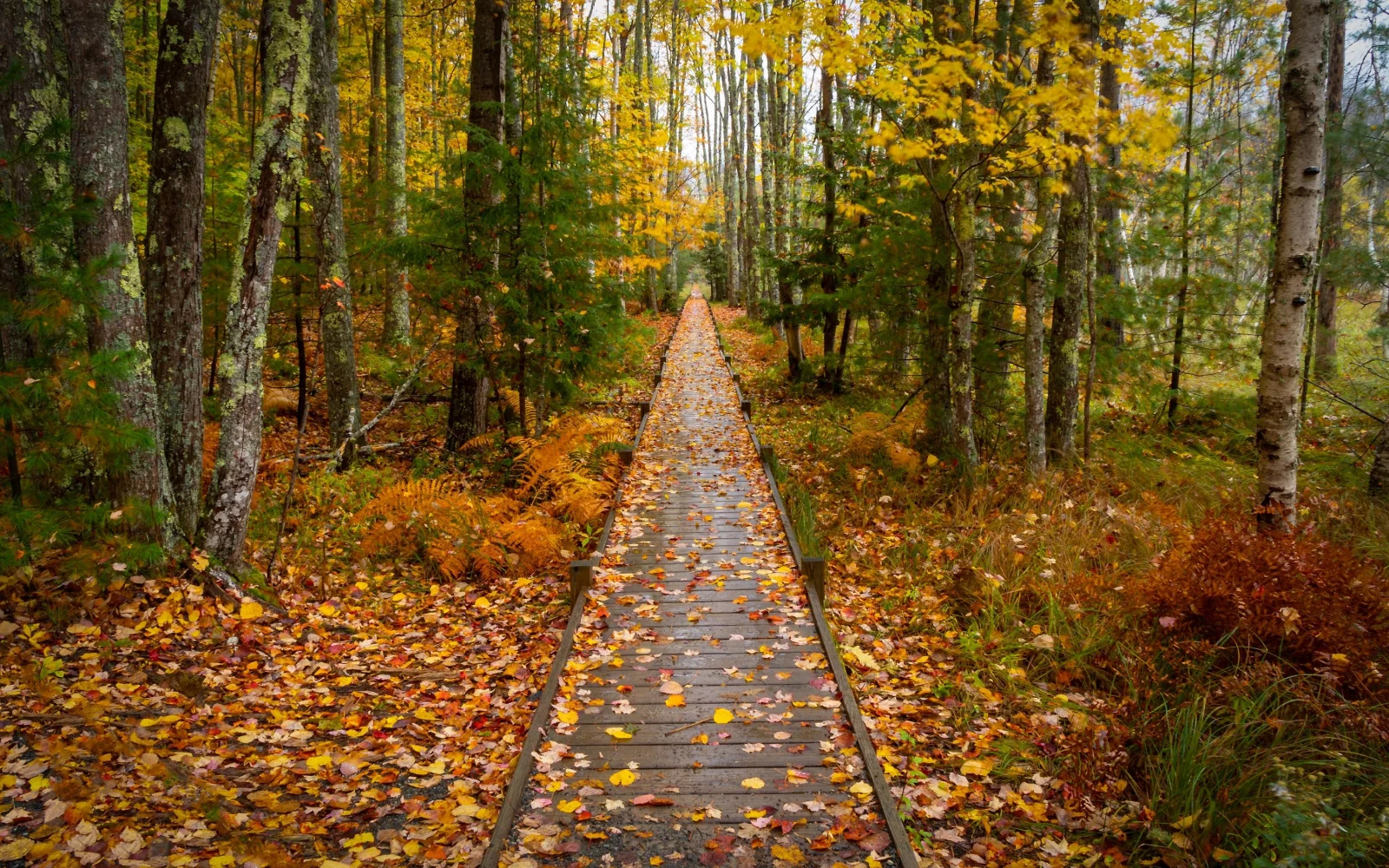What's the Best Time to Visit Acadia National Park?
The best time to visit Acadia National Park is in summer (June–August) when temperatures range from 53°F to 74°F. Summer is perfect for outdoor activities like canoeing, biking, and kayaking, as well as wildlife watching. Blueberries are abundant in the park during this season, and summer festivals like the Acadia Birding Festival and Bar Harbor Music Festival are worth attending.
Visitors from far and wide end up in Acadia National Park drawn in by the endless hiking trails, breathtaking views, and sunrise moments. As a matter of fact, with more than four million visitors annually, the park is one of the most popular parks in the entire country.
While it’s mesmerizing at all times, the best time to visit still depends on your travel expectations: do you wish to head there when it’s warm but crowded, or does the notion of exploring the park in solitude with lower temperatures appeal more to you?
Different seasons in the year offer distinct experiences, and there’s something for everyone — here are the best times to visit this special park based on your expectations, budget, and availability.
The Best Time to Visit Acadia National Park
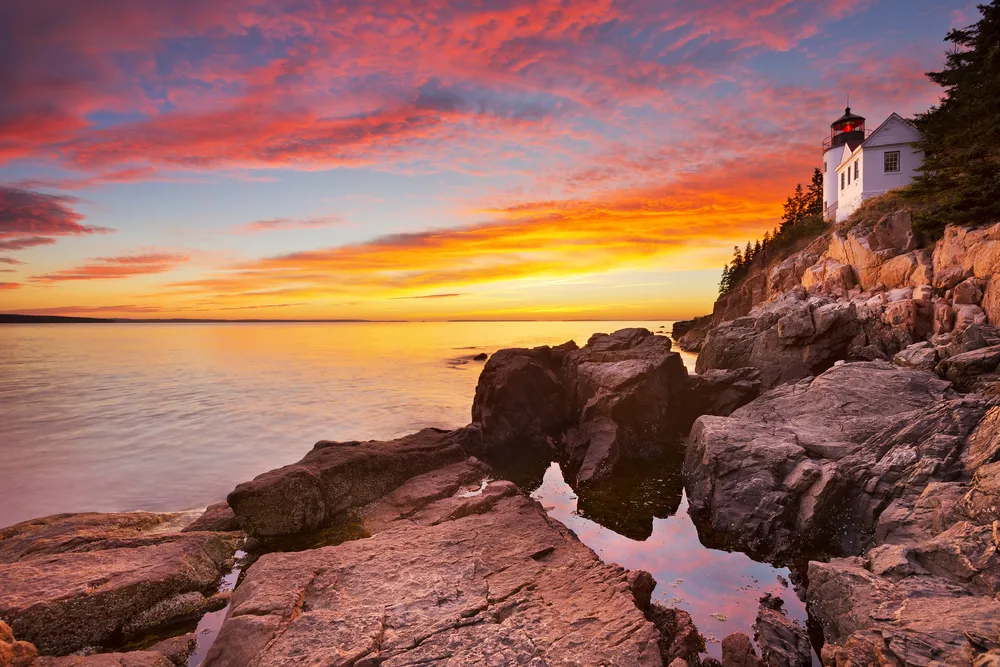
Sara Winter/Shutterstock
The overall best time to visit Acadia National Park is in summer (June–August). The pleasant summer temperatures (typically ranging between 53°F and 74°F) make tourists flock to the park to enjoy nature, catch sunsets, and engage in recreational activities such as canoeing, biking, and kayaking.
Also, wildlife tends to be more on the move during these summer months, allowing visitors to observe rare birds and interesting species. Next, one of the “tastiest” reasons to head to Acadia in summer is hands down the blueberries.
You can spot them everywhere in the park, as well as at the top of Cadillac Mountain. If you don’t feel like picking them on your own, you can always purchase some in the nearby local stores and sample them.
Finally, note that as summer gets quite busy in the park, finding accommodation at the last minute can be somewhat challenging, if not impossible, so make sure to book your stay in advance.
Also, the park gets congested fairly quickly once the peak season begins, but going in summer is so worth it. To spice things up, consider arriving around some of the popular summer festivals.
Our favorites are:
- the Acadia Birding Festival (June), a combination of lectures, adventures, and morning birding walks,
- Bar Harbor Music Festival (June-July), one of New England’s greatest music festivals,
- Bar Harbor Fine Arts Festival (July-August), featuring artists and crafters, both native and foreign.
Cheapest Time to Visit Acadia National Park
Acadia National Park has fixed entrance fees, so discussing the cheapest time to head there doesn’t really make sense.
To purchase a one-time entrance ticket, you’ll need to pay $20–35, which is the Standard Entrance Pass. Also, to save big, opt for an Annual Entrance Pass ($70) or America the Beautiful Pass, covering more than 2000 recreational use sites.
What’s more, there are some tweaks you can make to your itinerary to ensure you go as easy on your wallet as possible.
For starters, you can look for more affordable hotels or airfare deals. Also, keep in mind that the national park has fee-free days — when no entrance pass is required.
They are as follows (do make sure to check the dates before you go, as they’re usually announced annually):
- Birthday of Martin Luther King, Jr.
- First Day of National Park Week
- The Great American Outdoors Act
- National Public Lands Day
- Veterans Day
Lastly, note that members of the military, people with disabilities, and seniors get free access to the park. Volunteers who have achieved 250 service hours can visit Acadia National Park free of charge as well.
Least Busy Time to Visit Acadia National Park
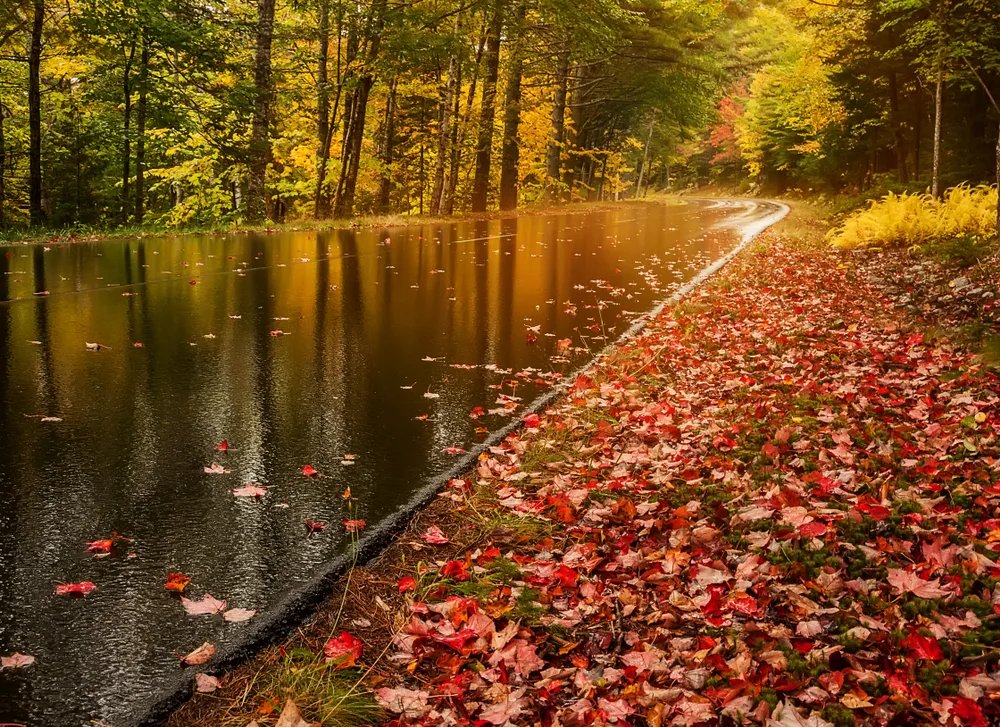
Ann Stryzhekin/Shutterstock
The least busy time to head to Acadia National Park is either in spring (March–May) or in fall (September–November).
The park is as quiet as it can get, and both seasons come with advantages for visitors who wish to explore the park at their own pace without having to deal with the busy crowds.
Spring visitors may encounter freshly melted snow, though, and the park facilities operate with limited hours until mid-April. However, the lack of crowds makes it worthwhile. Also, note that spring sees quite some rain, so pack rain gear to be prepared.
The temperatures during these months vary between 25°F and 59°F. The fall season parts ways with the summer crowds as family vacations come to an end.
Also, this period marks the beginning of the leaf-peeping season. Fall months see temperatures between 35°F and 66°F. Note that although these two seasons are shoulder seasons, there are still notable events taking place.
In April, there’s National Park Week, where visitors can share their “park story” or make one, and National Junior Ranger Day (April), which is all about learning why national parks matter.
In September, there’s the Acadia Night Sky Festival, so get ready for some spectacular night views. Finally, if you can’t visit Acadia during this period yet wish to steer away from the crowds as much as possible, note that you can head to parts of the park that are less busy than others.
For instance, Mount Desert Island’s west side is known as “the quiet side,” and the Schoodic Peninsula is largely uncrowded at any time of the year.
Worst Time to Visit Acadia National Park
The worst time to visit Acadia National Park is in winter (December–February).
The below-freezing temperatures (on average, between 18°F and 36°F) are simply way too uncomfortable for travelers wanting to explore the great outdoors in a national park.
Also, most lodgings and restaurants remain closed during the winter months, so finding a place to stay and eat out can be challenging.
The park also has winter operating hours starting in December, and most hiking trails and parts of the Park Loop Road stay closed. That said, if you’re keen to try winter sports, such as cross-country skiing, you’re in luck, as carriage roads remain functional.
Renting skis and snowshoes is possible in Bar Harbor, but kayaking and canoeing is off limits, as most lakes and rivers stay frozen. We can’t overemphasize the importance of checking the weather conditions on the park’s official website for severe storms, blizzards, or any weather updates.
This will help you plan your stay better but also inform you of potential closures of roads and additional park amenities.
On the whole, even though there’s still so much to be seen and enjoyed during winter in Acadia, there’s really a limited set of experiences one can have during winter, which is what makes all other seasons better.
Things to Consider
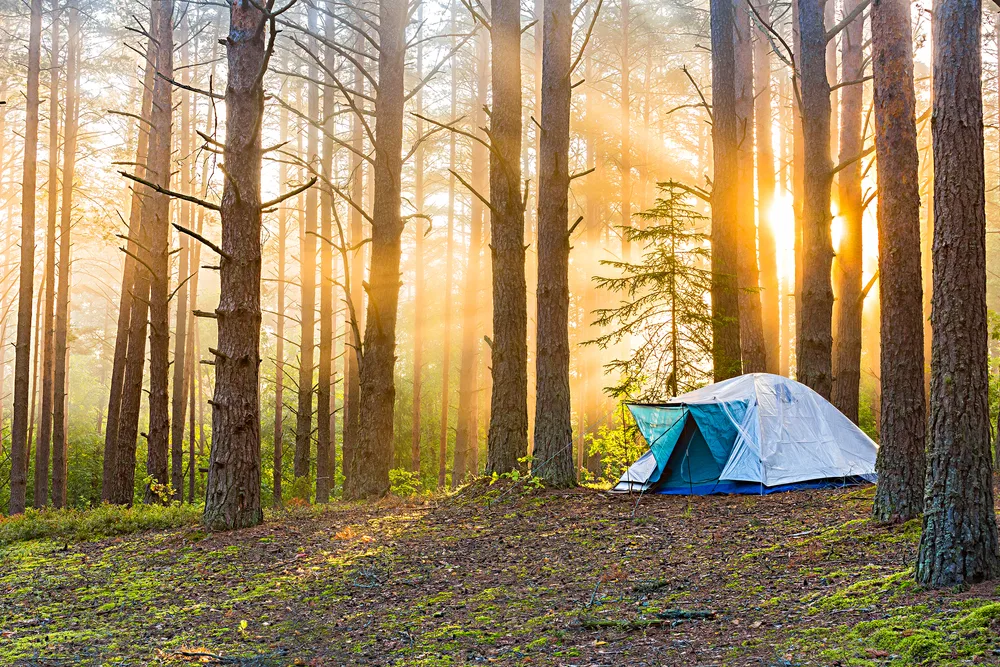
PHkorsart/Shutterstock
Wish to make the most out of your visit to Acadia National Park? Here are some extra things to consider then:
- If you wish to camp, you need to make a prior reservation.
- If you visit between the May 15 and October 22 period, you need to make a vehicle reservation and pay a small fee for doing so.
- If you’re planning on hitting the trails, pick a trail that corresponds with your skills and capacity, as most trails are for experienced hikers. Also, make sure someone always knows about your whereabouts and avoid hiking alone.
- Pets need to be kept on a leash.
- If you visit between June 23 and October 10, you can take advantage of the park-provided shuttle services to explore the park without dealing with separate reservations or obtaining a parking pass.
- The roads can be unpredictable, so it’s advisable to drive at no more than 35 mph.
- Download the NPS app on your phone. Available for both iOS and Android users, the NPS app allows you to find interactive maps, on-the-premise accessibility information, and tours within the park. That said, don’t rely on your cellphone and GPS navigation at all times, as it’s not as reliable in the woods. Bring a trail map with detailed topography just to be on the safe side.
- Although black bears inhabit many of the US forests, they’re typically not found in this park. That said, we still urge you to be careful when it comes to leaving food leftovers, as that may attract unwanted animal attention. Make sure to seal your food and dispose of garbage in sealed bags.
- The mid-May/mid-June period sees the most bugs, so bring bug spray if you visit around this time.
- Pack binoculars, especially those of you who are into bird-watching. Headlamps are also useful, SPF is a must, and a first-aid kit is just as important. If you’re planning on hiking, pack comfortable shoes and make sure you have enough water with you at all times.
- To ensure stress-free park navigation, opt for the free Island Explorer shuttle and avoid issues with parking and congestion.
- Get travel insurance.
Frequently Asked Questions
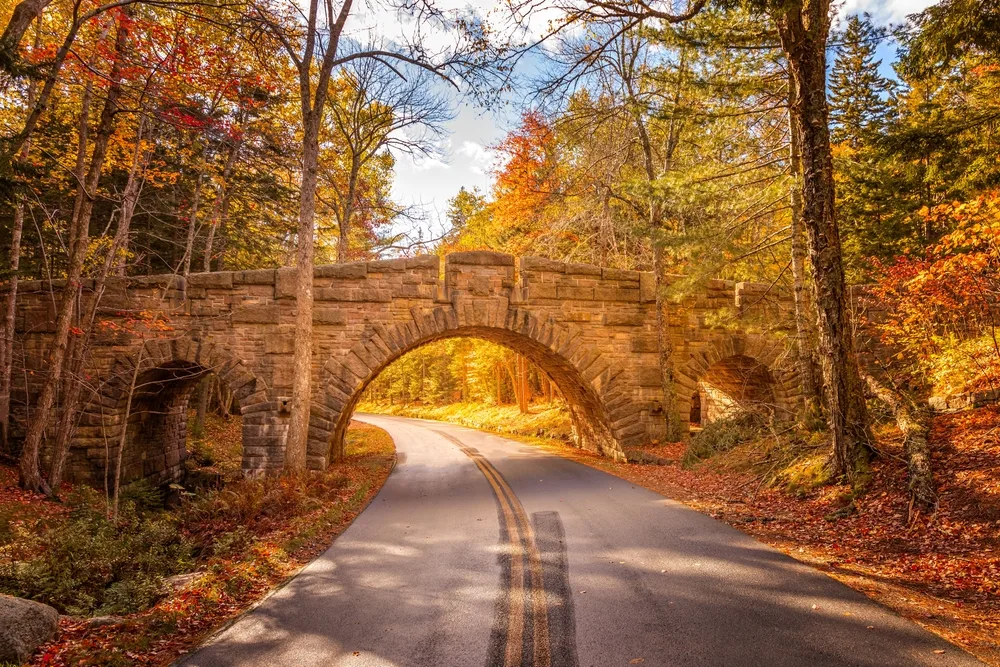
Martina Birnbaum/Shutterstock
How many days do you need at Acadia National Park?
You can see pretty much everything the park has to offer in as little as three days. That said, if you’d like to explore longer hiking trails or simply relax and take things slow, you may wish to consider staying five days.
What airport do you fly into for Acadia National Park?
At just eight miles away, Hancock County-Bar Harbor Airport is the closest airport at your disposal if you’re flying to Acadia National Park. If you’re traveling internationally, check out Boston, Bangor, ME, or Portland, ME instead.
Can you see the Northern Lights from Acadia National Park?
Unfortunately, no, as Acadia National Park is located on an island off the coast of Maine, so the Aurora isn’t quite visible there.
Can you see Acadia National Park by car?
You can take the 27-mile-long scenic drive on Park Loop Road, linking Acadia’s shoreline, lakes, and mountains. Along the loop, you can access areas such as Sand Beach, Jordan Pond, Cadillac Mountain, Sieur de Monts, and Otter Point.
What is the best town to stay in while visiting Acadia National Park?
The best town to stay in during your visit to Acadia National Park is Bar Harbor. A seaside town just a stone’s throw away from Acadia, Bar Harbor has a downtown area, cute shops, and nice restaurants.
Here are some frequently asked questions to know before visiting the park:
So, What’s the Best Time to Visit Acadia National Park?
| 👍 Best Time to Visit | June to August |
| 💲 Cheapest Time to Visit | Visit during some fee-free days |
| 🗓️ Least Busy Time to Visit | September to November |
| 👎 Worst Time to Visit | December to February |
On the whole, whether you’re on the lookout for a fun camping experience, enjoying a stunning sunset, or simply wishing to push your hiking limits to the test, Acadia is the place to be.



